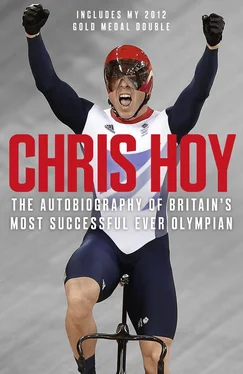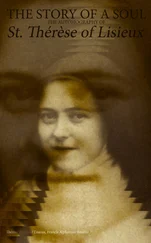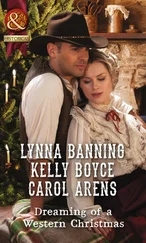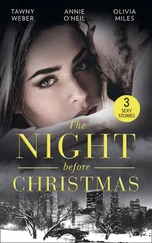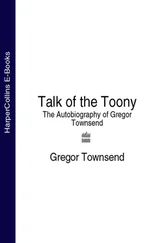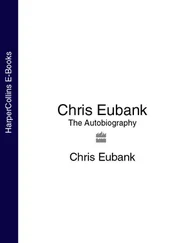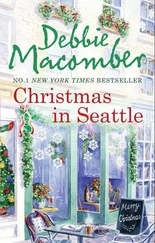As far as the rugby went, there was no pressure to play, either from the teaching staff or from my peers. I suppose some implicit ‘pressure’ was applied by the roll call of illustrious rugby players among the school’s former pupils, headed by the Hastings brothers. But there are other notable alumni, too, including Martin Bell, the Olympic skier, Martha Kearney, the broadcaster, the MPs Malcolm Rifkind, David Steel and Chris Smith, the mountaineer Robin Smith, the architect Sir Basil Spence, and Mylo, the singer-songwriter. A pretty eclectic bunch – and even the three politicians all represent different parties.
When I was at school, there were future Scottish rugby internationals Jamie Mayer, Marcus Di Rollo and Jason White, who would go on to captain the national side.
When I started playing rugby we were coached by Mr French, a Rangers fan, but still a good guy. In those days it was straight into the full game, no mini rugby to break us in. And initially it was similar to the football in many regards, with 15 of us all chasing after the ball. Loosely speaking there were backs and forwards, but we didn’t stick too rigidly to that.
That said, I quickly settled on the position of stand-off, and I became the kicker. There was a lot of pressure involved in being the kicker. As with the football, there was no concession made to the fact we were small, with puny legs: we played on full-size pitches, with full-size goals. So kicking was a challenge, and my record wasn’t quite as impressive as Chris Paterson’s.
Like Paterson, I often managed 100 per cent, but that would be either 100 per cent over, or 100 per cent missed, with the ball invariably skidding along the ground. If I got the first conversion over, then I was fine; it would relax me, and I’d have a good game. But the kicking tended to mirror the game: if I kicked well, I played well; if I kicked badly, I found that it played on my mind and destroyed my game. I had some horrendous games.
It’s funny, though, that kicking seems to be something that attracts the individualist. Think of Jonny Wilkinson and Paterson, and you tend to think of them obsessively practising the art of kicking, long after their team-mates have left the training pitch. Paterson has even spoken in the past about being given a hard time at school for spending so long on his own, practising his kicking. As an aspiring young rugby player I was similar, I suppose. If I’d kicked badly in a match, the following day would see me in one of our two local parks, with my dad, practising until it got dark – or until my dad got bored.
But the problem – and this would be something of a recurring theme for me in my sporting life – was that all that practice didn’t really make much difference. Nobody ever really showed me how to kick. My dad knew the basics, but I had no one to help me with my technique. It’s a bit like having a bad golf swing: you can practise as much as you like, but without expert help you’re not going to get any better. It was also like golf in another sense, though. If I stuck one through the posts every once in a while it gave me a real buzz – and kept me practising just a little bit longer.
My kick-offs were just as erratic as my conversion attempts. I had this knack of picking out the biggest guy in the opposing team, and I’d be confronted with the sight of this – relatively speaking – huge second row catching it and running straight back towards me. Thus, within the first minute of most games, I’d suffer a big bang to the head. But I only suffered concussion on one occasion, in training. I’d broken through and was running towards the try line; and I thought I was clear, so I throttled back as I neared the posts, and was cruising towards the line, oblivious to the fact that an opposing winger had chased me all the way. He dived and clipped my ankles, and I, clutching the ball to my chest, hit the ground like a sack of spuds. The ball ‘broke’ my fall, but it caused a whiplash effect, my head bouncing off the ground. I had no idea where I was, what day it was or what I was doing.
Remarkably, the only other serious injury I suffered on the rugby pitch was a broken thumb. It was the first and only time my dad missed a game – an omen, perhaps. I was in fourth year at secondary school, it was on the eve of my first important exams, the Standard Grade (the Scottish equivalent to ‘O’ levels) prelims, when, in the early minutes of a game against Heriot’s, I went to hand off a big prop and felt my thumb bend right back. It was excruciating, but I gave it a shake and carried on playing. Until the next scrum, when I received a pass. Suffice to say that the resulting scream could probably be heard by my parents, who were out of town for the weekend. The result was an arm in plaster from hand to elbow, which meant I was assigned a ‘scribe’ – some poor sixth year – for the exams. This wasn’t as inconvenient as it sounds, because I remember my ‘scribe’ being pretty helpful with the multiple-choice questions on my Chemistry paper. If I said ‘C’ he’d say: ‘Do you want to think about that r-e-a-l-l-y c-a-r-e-f-u-l-l-y?’
The high point of my rugby career came when I was selected to captain the Edinburgh Schools under-15 team against the North of Scotland. It felt amazing to pull on the navy blue kit – which bore an uncanny resemblance to the Scotland jersey – for a match played up in Inverness, and which we won, with me kicking three out of three conversions. Eat your heart out, Chris Paterson. It was quite an eye-opener playing with kids from other schools, and there was a seriousness of purpose about us; it came, I suppose, from the sense of pride, and responsibility, we all felt representing not only our schools, but our city. I remember a prop from Musselburgh displaying a particularly impressive attitude for a 14-year-old. After he scored the first try he jogged back with the ball, and threw it at me – hard – with the instruction: ‘Make it count!’ No wonder I felt such relief at seeing that first one sail through the posts. He was a big guy.
And I, by contrast, was small for my age. I had been big for my year in primary school, but found myself being overtaken by a lot of the others in high school. By third year, my last year in the rugby team, I was the second smallest in the team, which put me at a serious disadvantage. By the time I was 15 everyone had been growing and I hadn’t really started – I was a little shrimp, a Smurf. Only the scrum-half was smaller than me, and I used to take a real pasting in games.
I loved going to rugby matches as well, and attended virtually all of Scotland’s Five Nations home games, sitting in the schoolboy enclosure and then running on to the pitch at the end of the match. After one game against Ireland, which Scotland won, I was the first on to the pitch – a sign of my promise as a sprinter, possibly – and ran up to Damian Cronin, the big second row, as he was filmed leaving the pitch. I ended up on TV, very visible in my yellow anorak, with my mop of almost matching hair, patting Cronin on the back.
One of the greatest games in Scotland’s history – and arguably my greatest sporting memory – was the 1990 Five Nations decider against England at Murrayfield, the national stadium that was a stone’s throw from my house. It was the Grand Slam decider, with both teams in contention, but England almost certain to win. Or so they thought.
Scotland, led out by David Sole, set the tone by entering the field at a slow, almost funereal, pace. England, led by Will Carling, had looked super confident, but – as crazy as it sounds – the way that Scotland walked on to the pitch seemed to say: we’re in charge. It gave them the impetus, and they sustained that in the game itself; you could see and almost feel how pumped up the Scotland team was as they got stuck into their opponents, and they won 13–7 to give Scotland the Calcutta Cup, Triple Crown and Grand Slam. All in all, it was a pretty good afternoon – one of the proudest in Scotland’s sporting history.
Читать дальше
